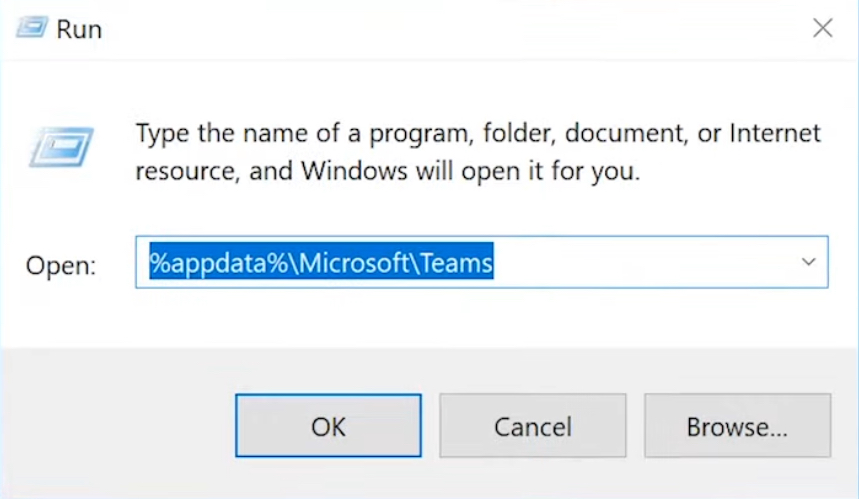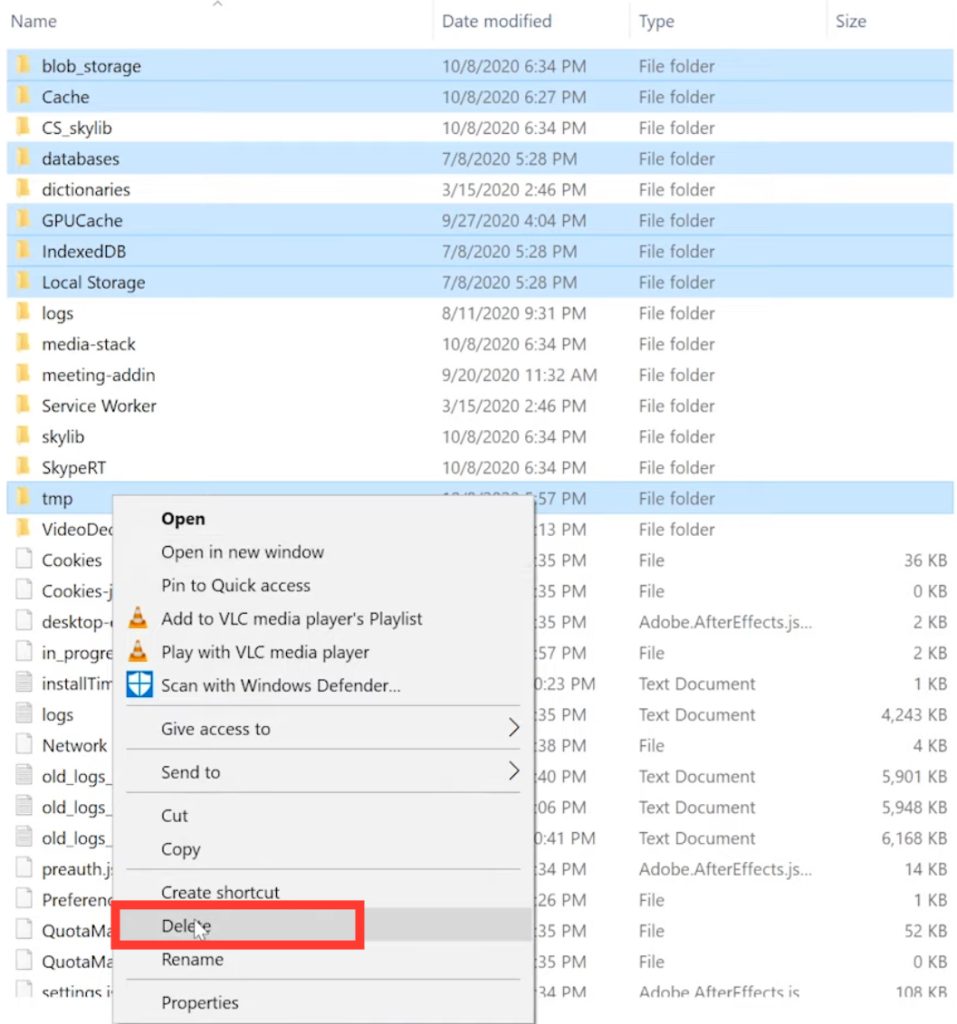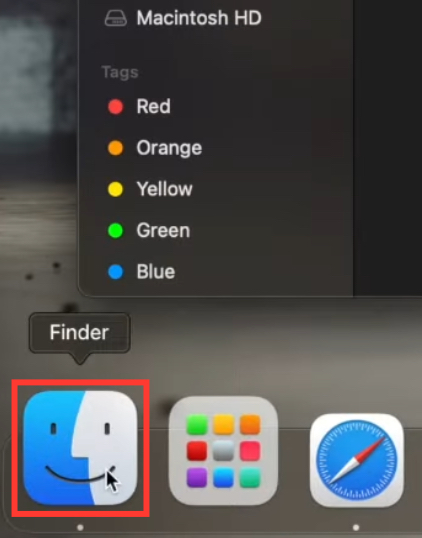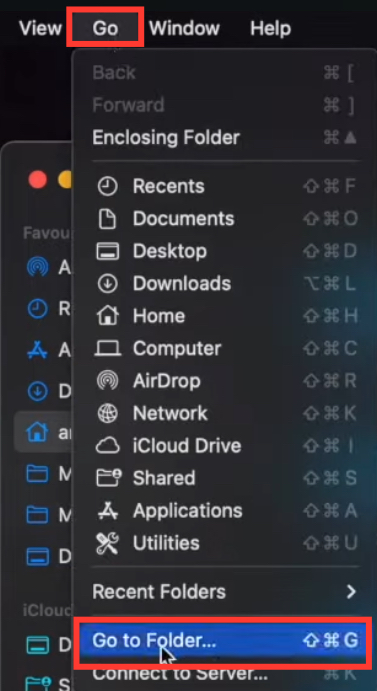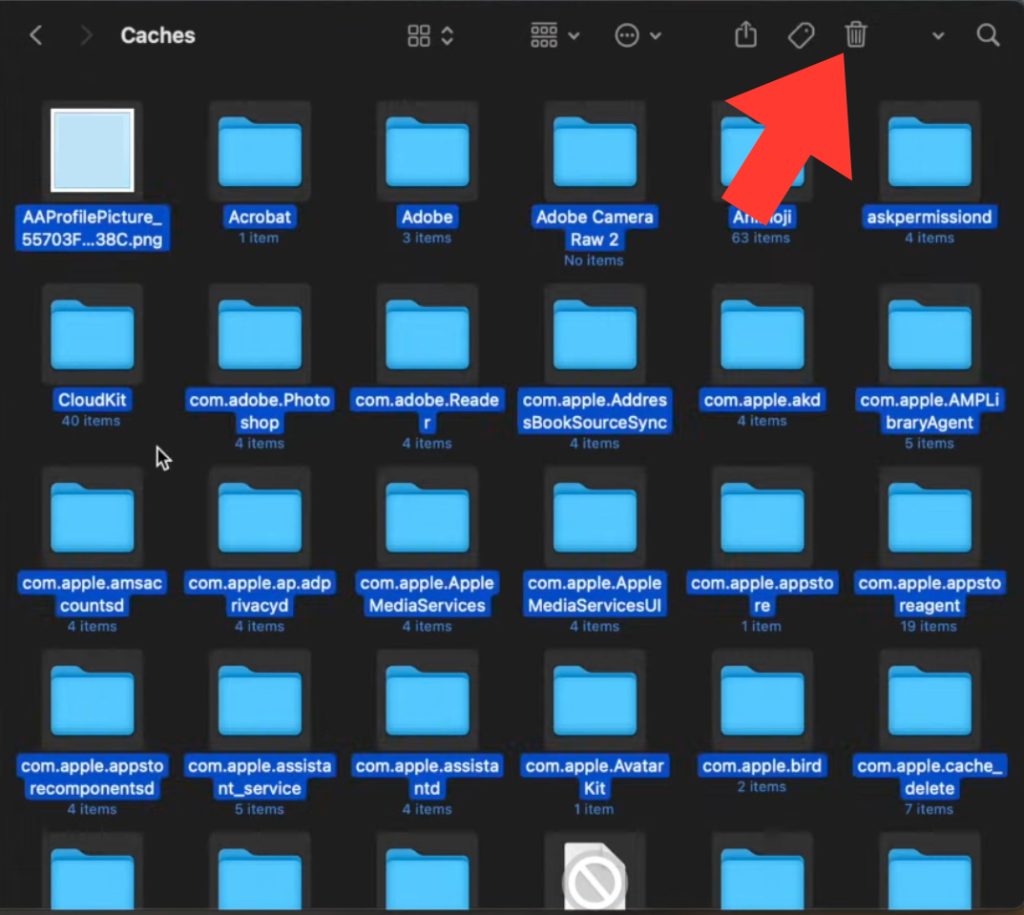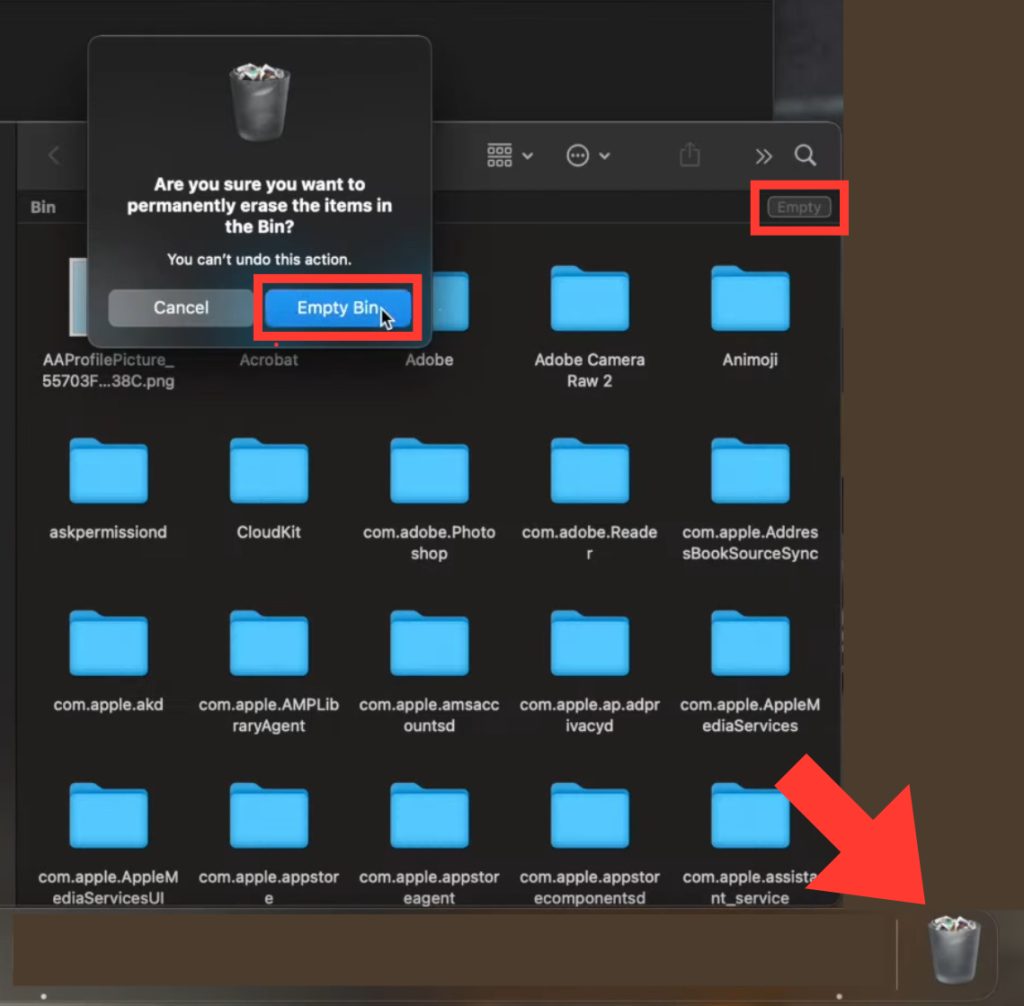Best Guide to Clear Microsoft Teams Cache (2024)
Introduction to Microsoft Teams Cache Clutter.
What is the Microsoft Teams Cache?
The Microsoft Teams cache is a dedicated storage space used by the Teams application to quickly access frequently used data.It plays a fundamental role in the performance of the app by storing temporary files such as user preferences, chat history, profile pictures, and document previews.
With these data on hand, Teams can provide a more seamless and speedier user experience since information is retrieved from local storage rather than downloaded from the server each time.
Introduction to Microsoft Teams Cache Clutter
What is the Microsoft Teams Cache?
The Microsoft Teams cache is a dedicated storage space used by the Teams application to quickly access frequently used data. It plays a fundamental role in the performance of the app by storing temporary files such as user preferences, chat history, profile pictures, and document previews. With these data on hand, Teams can provide a more seamless and speedier user experience since information is retrieved from local storage rather than downloaded from the server each time.
Learn more about Excel with our Free Microsoft Excel Online Course.
Key Takeaways
- Clearing Microsoft Teams cache ensures optimal performance by removing accumulated temporary files and data.
- You can navigate to specific directories on Windows or Mac and delete cache files to clear Teams cache effortlessly.
- Regular cache clearance resolves common issues like slow loading and syncing problems, enhancing overall Teams functionality.
Why Clearing Cache Regularly Matters
Learning how to clear Microsoft Teams cache is a routine maintenance task that’s vital for several reasons:
- Performance Enhancement: As more data accumulates in the cache, the app’s ability to run smoothly can be compromised. Regular clearance ensures a snappier and more responsive user experience by facilitating faster loading times and eliminating unnecessary data that may burden the system.
- Access to Latest Data: Teams’ cache holds information from previous sessions. However, if this data becomes outdated or corrupt, it can prevent the latest updates, changes, or messages from appearing correctly. Clearing the cache ensures that you are always working with the most recent information.
- Troubleshooting Synchronization & Display Issues: Many synchronization problems and display errors within the Teams app are directly linked to cache-related conflicts. Periodic cache clearance can solve issues like messages not appearing, files failing to sync, or incorrect display of user interface elements.
- Security and Privacy Safeguard: On shared or public computers, your Teams cache might contain sensitive information that, if accessed by others, could pose a privacy threat. Clearing the cache is a preventive measure that helps protect personal and business data confidentiality.
By making cache clearing a regular part of using Microsoft Teams, users ensure the application’s optimal functionality, security, and alignment with the latest collaboration requirements and updates.
Step-By-Step Guide to Clearing Cache on Different Platforms
Clear the Cache in Microsoft Teams for Windows Users
Clearing the cache in Microsoft Teams on a Windows machine is a straightforward process. Follow these steps to refresh your application’s local data stores:
STEP 1: Close Microsoft Teams: Ensure that Microsoft Teams is completely closed before proceeding.
STEP 2: Navigate to AppData: Press Windows Key + R to open the Run dialog box. Type %appdata%\Microsoft\teams and press Enter. This will take you to the Teams cache directory.
STEP 3: Delete Cache Contents: Within the Teams folder, select all files and folders except the Downloads folder and delete them. You can do this by pressing Ctrl + A to select all files and folders, then press Delete.
STEP 4: Clear Teams Cache in LocalAppData: In the same Run dialog box (Windows Key + R), type %localappdata%\Microsoft\Teams and press Enter. Again, select all files and folders except the Cache folder and delete them.
STEP 5: Restart Microsoft Teams: After clearing the cache, restart Microsoft Teams. The application will recreate necessary cache files as needed.
By following these steps, Windows users can ensure their Teams application runs optimally, free from clutter and potential data corruption issues.
How to Clear the Teams Cache on Mac Efficiently
Customers who use Microsoft Teams on Mac can clear their cache by following these steps to maintain the application’s performance and ensure they’re accessing the most current data:
STEP 1: Completely Exit Microsoft Teams: Before proceeding, make sure Microsoft Teams is not running. Right-click the Teams icon in the Dock and then select “Quit”, or use the Command + Q shortcut to exit the application completely.
STEP 2: Use Finder to Access Cache Folders: Open a Finder window, click “Go” in the menu bar at the top of the screen, and click on “Go to Folder…” from the dropdown menu.
STEP 3: Navigate to Caches Directory: Type ~/Library/Caches into the dialog box that appears and click “Go” to be taken to the Caches directory.
STEP 4: Remove Teams Cache: Look for a folder named com.microsoft.teams. Once found, right-click on it and select “Move to Trash” to delete this cache folder.
STEP 5: Clear Remaining Cache Files: For a thorough clean-up, you may also need to navigate to ~/Library/Application Support/Microsoft/Teams. In this location, remove any cache-related files or folders you find, again moving them to the Trash.
STEP 6: Empty the Trash: Control-click or right-click the Trash icon in your Dock and select “Empty Trash” to permanently delete the files you’ve placed there. Ensure that you are only deleting files related to Teams and nothing else you may need to keep.
STEP 7: Restart Microsoft Teams: Open the Teams application once more from your Applications folder or Launchpad, and allow it to generate a fresh cache.
Clearing the cache on your Mac can lead to noticeable improvements in Microsoft Teams‘ speed and functionality, mitigate issues with outdated or corrupt data, and provide an overall enhanced collaboration experience.
The Aftermath of Clearing Teams Cache
Improving Performance Post-Cache Clearance
The act of clearing Microsoft Teams cache can have a direct positive impact on the application’s performance. After successfully completing a cache clearance, users often notice several improvements:
- Faster Load Times: With the clutter of old, unnecessary files removed, Teams can start up and navigate between different sections more rapidly.
- Updated Content Delivery: Clearing the cache forces Teams to fetch the latest content, ensuring you’re up-to-date with the latest messages, attachments, and team collaborations.
- Resolved Glitches and Errors: Many issues such as crashing, freezing, or unexplainable behavior can be attributed to corrupted cache files. A fresh cache often resolves these troubles.
- Decluttered Storage: Regular clearing helps maintain optimal storage usage on your device, preventing cache-related software bloat over time.
- Smoother Integration with Other Office Products: As Microsoft Teams is part of the larger Office ecosystem, a clear cache means better synchronization with other Office apps.
- Enhanced Security: Regularly clearing your cache can also remove potentially sensitive data that should not be stored long-term on the device.
Post-cache clearance, it is advised to close all unnecessary applications and restart the device to maximize the beneficial effects of the operation. A clear cache combined with a fresh system boot allows Microsoft Teams to utilize system resources more effectively.
Resolving Common Issues Once Cache is Cleared
Clearing the cache in Microsoft Teams can be a powerful solution to fix numerous common issues that users might face. After completing the cache clearance process, here’s a rundown of problems that are often resolved:
- Connectivity Issues: Users experiencing issues when trying to connect to Teams meetings or facing intermittent disconnections may find that clearing the cache helps stabilize their connection.
- Synchronization Problems: Data not syncing properly between the desktop app and the cloud, such as updates in chat or file changes, are often straightened out after the cache is refreshed.
- Interface Anomalies: Glitches such as incorrect display of user interface elements, such as missing buttons or inconsistent theme application, typically disappear once the cache is cleared.
- Delayed Notifications: If Teams notifications are delayed or not appearing at all, clearing the cache can reset the notification system and restore timely alerts.
- Audio/Video Quality Issues: Clearing the cache can sometimes resolve audio or video problems during calls, as corrupted cache files can affect the performance of these functions.
- Outdated Information: Any lag in displaying updated team messages, files, or presence information is often fixed with a fresh cache.
- Login Difficulties: Users who are unable to sign in, or being wrongly signed out, may find that clearing cache helps in establishing a successful and stable sign-in process.
- Extension and Add-in Troubles: Issues with third-party services integrated into Teams, including extensions and add-ins, can sometimes be tied to cache data conflicts, making clearance a helpful fix.
Keep in mind that while clearing the cache resolves a variety of issues, it might also reset some personalized settings within Teams. So, it’s a good practice to note down any unique configuration settings before you clear the cache to easily restore them if necessary.
Essential Tips and Precautions
Additional Steps for Optimizing Microsoft Teams
Beyond clearing the cache, there are several additional steps you can take to optimize your Microsoft Teams experience:
- Trim Down Teams and Channels: Keep your list of teams and channels focused and relevant. Archive or leave groups that are no longer active or necessary to reduce navigation clutter.
- Utilize Status Messages: Set your status message to reflect your current work situation. This can prevent unnecessary messages during focus time and improve communication efficacy.
- Personalize Notifications: Tailor your notification settings to prioritize important alerts and suppress non-essential ones, helping you stay focused on your most crucial tasks.
- Update Regularly: Make sure you are running the latest version of Microsoft Teams. Updates often include performance improvements, new features, and bug fixes.
- Optimize Video Settings: During video calls, consider turning off HD video when it’s not essential to conserve bandwidth and computing resources.
- Manage Tabs and Apps: Limit the number of tabs and apps you have open in Teams. Each additional tab and app can consume resources and potentially slow down the application.
- Network Configuration: Ensure that your network settings are conducive to good performance. This might include prioritizing Teams traffic on your network or using a wired connection to improve stability and bandwidth.
- Limit Background Apps on Your Device: Close unnecessary background apps on your computer to allocate more system resources to Teams.
- Review Compliance and Security Features: Properly configuring security and compliance settings can not only keep your data safe but also ensure that Teams is running with the necessary tools and no excess overhead.
By adopting these additional steps and maintaining good Teams hygiene, you’ll be setting up your digital workspace for enhanced productivity, security, and collaboration.
Safeguarding Your Data During Cache Clearance
Ensuring that your data is protected during the cache clearance process in Microsoft Teams is essential. Here are steps to safeguard your valuable information:
- Backing Up Data: Before clearing the cache, ensure that any vital files, conversation history, or important notes you have stored in Teams are backed up. Use the Teams’ files tab to save documents to OneDrive or download to your local storage.
- Note Personal Settings and Customizations: Write down or take screenshots of any specific settings or customizations you have made to Teams, as clearing the cache can sometimes reset these preferences.
- Secure Login Credentials: Make sure you have your Microsoft Teams login credentials readily available, as you may be logged out of the application after clearing your cache.
- Verify Active Directory Sync: If your organization uses Active Directory to sync accounts, ensure that this service is working correctly so that your Teams account remains intact post-clearance.
- Check Compliance: Confirm with your IT department if there are any compliance considerations to be aware of before proceeding with a cache clearance, especially in regulated industries.
- Sign out before Clearance: If you’re using Teams on a shared computer, sign out before you begin the cache clearing process to prevent any accidental leakage of session data.
- Close All Team Instances: Ensure that all instances of Teams are closed on your device, including web versions, to prevent any syncing issues while clearing the cache.
By following these precautions, you can protect your data and account settings while conducting a thorough clean-up of the Teams cache. It’s a necessary balance between maintaining performance and ensuring that critical information is not lost in the process.
FAQs About Microsoft Teams Cache
How Often Should You Clear the Teams Cache?
Clearing the Microsoft Teams cache does not need to be part of your daily routine, but it is beneficial to do so periodically. The frequency with which you should clear the cache can depend on several factors:
- Usage Intensity: If you use Teams heavily throughout the day for chats, meetings, and collaborative work, the cache can fill up more quickly. In such cases, clearing the cache monthly or even bi-weekly might be beneficial.
- Performance Issues: If you start experiencing performance issues such as slow response times, errors, or glitches in Teams, these can be signals that it’s time to clear the cache.
- After Updates: Sometimes, after a significant update, clearing the cache can help ensure that all new features work correctly and that there are no conflicts between old and new data.
- Storage Constraints: Users with limited storage capacity may need to clear their cache more frequently to prevent space issues on their devices.
Generally, a good practice is to clear your Teams cache every few months as part of regular maintenance, or as needed, based on your specific usage patterns and any performance issues that arise.
Where is MS Teams cache located?
The location of the Microsoft Teams cache depends on the operating system you are using. Here’s where you can typically find it:
For Windows 10 and earlier versions:
- The Microsoft Teams cache on these versions of Windows is located at:
C:\Users\Username\AppData\Roaming\Microsoft\Teams
For Windows 11:
- On Windows 11, the cache is stored in a slightly different location at:
C:\Users\Username\AppData\Local\Packages\MicrosoftTeams_8wekyb3d8bbwe
Keep in mind that “Username” should be replaced with your actual username you use to log into your Windows account.
For Mac OS:
- On a Mac, Microsoft Teams cache can be found in the “Application Support” folder located in:
~/Library/Application Support/Microsoft/Teams
This path can be accessed through the Finder using the “Go to Folder…” option in the “Go” menu. Remember that the Library folder is hidden by default on macOS, so you might need to use the CMD + Shift + . shortcut to toggle the visibility of hidden files and folders.
How long does Teams cache last?
The duration that the Microsoft Teams cache lasts is not fixed and depends on a variety of factors, including the usage patterns of the application, the amount of data the app processes, and specific Teams settings related to data retention. Generally, the cache persists until any of the following occurs:
- Manual Clearance: The user manually clears the cache, which immediately deletes the temporary data.
- Application or System Updates: The cache may be cleared or invalidated when Teams or the operating system undergoes an update that affects the way data is stored or accessed.
- Cache Size Limits: Teams may have internal limits on how much data can be stored in the cache. Once these limits are reached, the app may automatically purge older files to make space for newer ones.
- Corruption or Errors: In cases where the cache becomes corrupted or a significant error is encountered, Teams might clear the cache automatically in an attempt to resolve the issue.
Therefore, the Microsoft Teams cache is effectively self-managed, with data persisting in the cache to optimize performance until one of the above triggers leads to its deletion or renewal. It’s essential to note that while there’s no specific expiration timer for the Teams cache, regular clearing is still recommended to maintain optimal function and performance.
Is It Safe to Clear the Teams Cache?
Yes, it is safe to clear the Microsoft Teams cache. Clearing the cache is a regular maintenance activity designed to help resolve issues and improve the app’s performance without harming your data or the application’s functionality. Here are some points to consider:
- No Loss of Personal Data: Clearing the cache does not delete any of your personal chats, files, or information within Teams. These are stored on Office 365 servers, and Teams will reload any necessary information the next time you log in.
- Temporary Files Only: The cache is specifically for storing temporary data such as thumbnails, icons, and certain settings. These are not critical to your work and can be re-downloaded or recreated by Teams when needed.
- Potential Fix for Issues: Clearing cache can help troubleshoot and fix common problems, such as slow performance, crashes, and sync issues, making it not only safe but sometimes necessary.
- Regular Maintenance: Just like clearing the browser cache can solve web navigation issues, clearing the Teams cache is considered good practice for maintaining the application’s health.
However, it’s always wise to ensure you’ve saved any important information before clearing the cache, especially if you have ongoing drafts or unsaved work directly in Teams.
John Michaloudis is a former accountant and finance analyst at General Electric, a Microsoft MVP since 2020, an Amazon #1 bestselling author of 4 Microsoft Excel books and teacher of Microsoft Excel & Office over at his flagship MyExcelOnline Academy Online Course.

